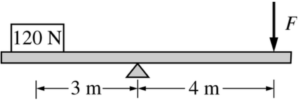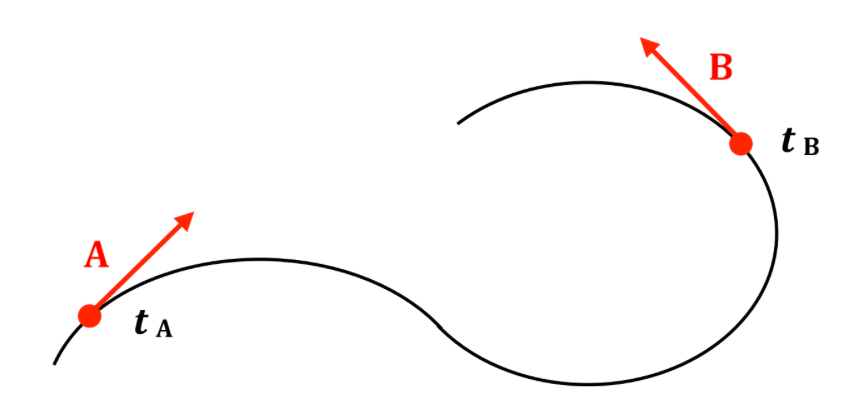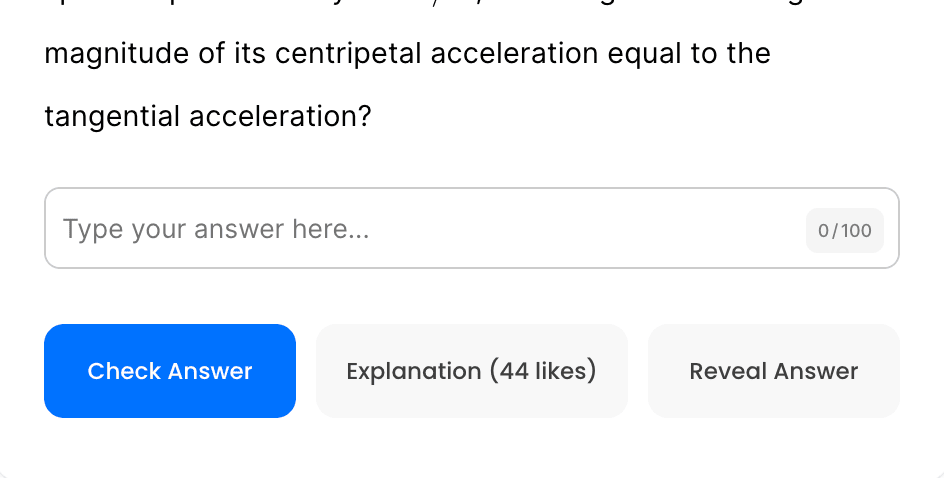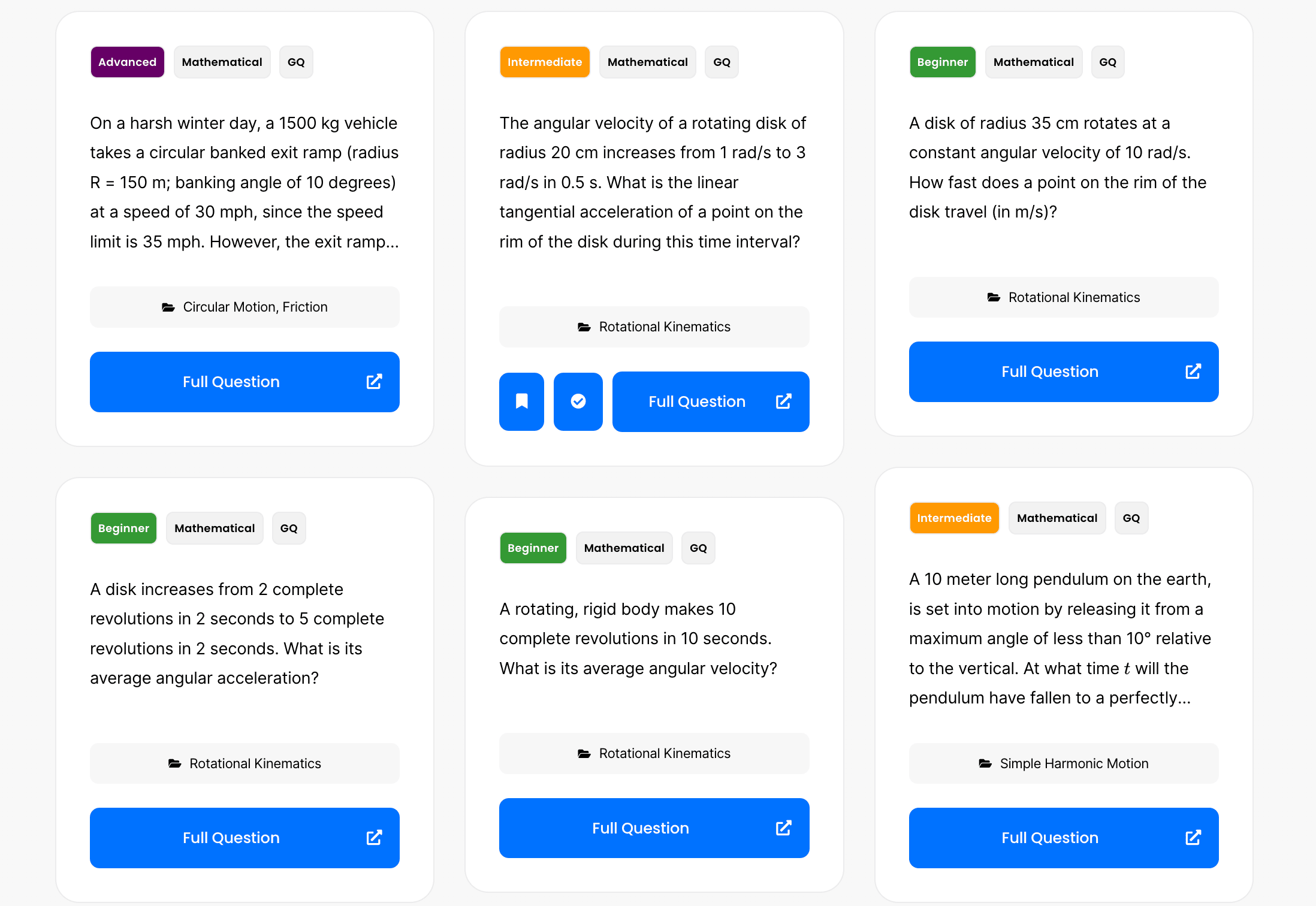When a golf ball is dropped to the pavement, it bounces back up.
A projectile is fired with an initial speed of \( 36.6 \) \( \text{m/s} \) at an angle of \( 42.2^\circ \) above the horizontal on a long flat firing range.

An object weighing 120 N is set on a rigid beam of negligible mass at a distance of 3 m from a pivot, as shown above. A vertical force is to be applied to the other end of the beam a distance of 4 m from the pivot to keep the beam at rest and horizontal. What is the magnitude F of the force required?
A block of mass [katex] m [/katex] is moving on a horizontal frictionless surface with a speed [katex] v_0 [/katex] as it approaches a block of mass [katex] 2m [/katex] which is at rest and has an ideal spring attached to one side.
When the two blocks collide, the spring is completely compressed and the two blocks momentarily move at the same speed, and then separate again, each continuing to move.

Two spheres of equal size and equal mass are rotated with an equal amount of torque. One of the spheres is solid with its mass evenly distributed throughout its volume, and the other is hollow with all of its mass concentrated at the edges. Which sphere would rotate faster?
 An object travels along a path shown above, with changing velocity as indicated by vectors \( A \) and \( B \). Which vector best represents the net acceleration of the object from time \( t_A \) to \( t_B \)?
An object travels along a path shown above, with changing velocity as indicated by vectors \( A \) and \( B \). Which vector best represents the net acceleration of the object from time \( t_A \) to \( t_B \)?
You throw a rock straight up with an initial velocity of \( 5.0 \, \text{m/s} \).
The angular velocity of a rotating disk of radius 20 cm increases from 1 rad/s to 3 rad/s in 0.5 s. What is the linear tangential acceleration of a point on the rim of the disk during this time interval?
An object is moving in the \( +x \) direction and begins to slow down. What must be true about its acceleration?
Consider a rigid body that is rotating. Which of the following is an accurate statement?
A rifle is used to shoot a target twice, using identical cartridges. The first time, the rifle is aimed parallel to the ground and directly at the center of the bull’s-eye. The bullet strikes the target at a distance of \( H_A \) below the center, however. The second time, the rifle is similarly aimed, but from twice the distance from the target. This time the bullet strikes the target at a distance of \( H_B \) below the center. Find the ratio \( H_B / H_A \).
List at least 2 everyday forces that are not conservative, and explain why they aren’t.
By continuing you (1) agree to our Terms of Use and Terms of Sale and (2) consent to sharing your IP and browser information used by this site’s security protocols as outlined in our Privacy Policy.
Quick Start Guide
AP physics 1, AP C, honors and advanced physics students.
Quickly filter questions by units and more.


Here’s guide to using 5 UBQ filters.
GQ = general question, MCQ = multiple choice, FRQ = free response.


Click the check or bookmark button.
Now you’ll be able to see completed or bookmarked questions at a glance!
Answer keys, personalized for you.

Phy will be responsible for grading your FRQs and GQs.
No more copy and pasting. Just solve and snap.
Questions for Mastery

By continuing you agree to nerd-notes.com Terms of Service, Privacy Policy, and our usage of user data.